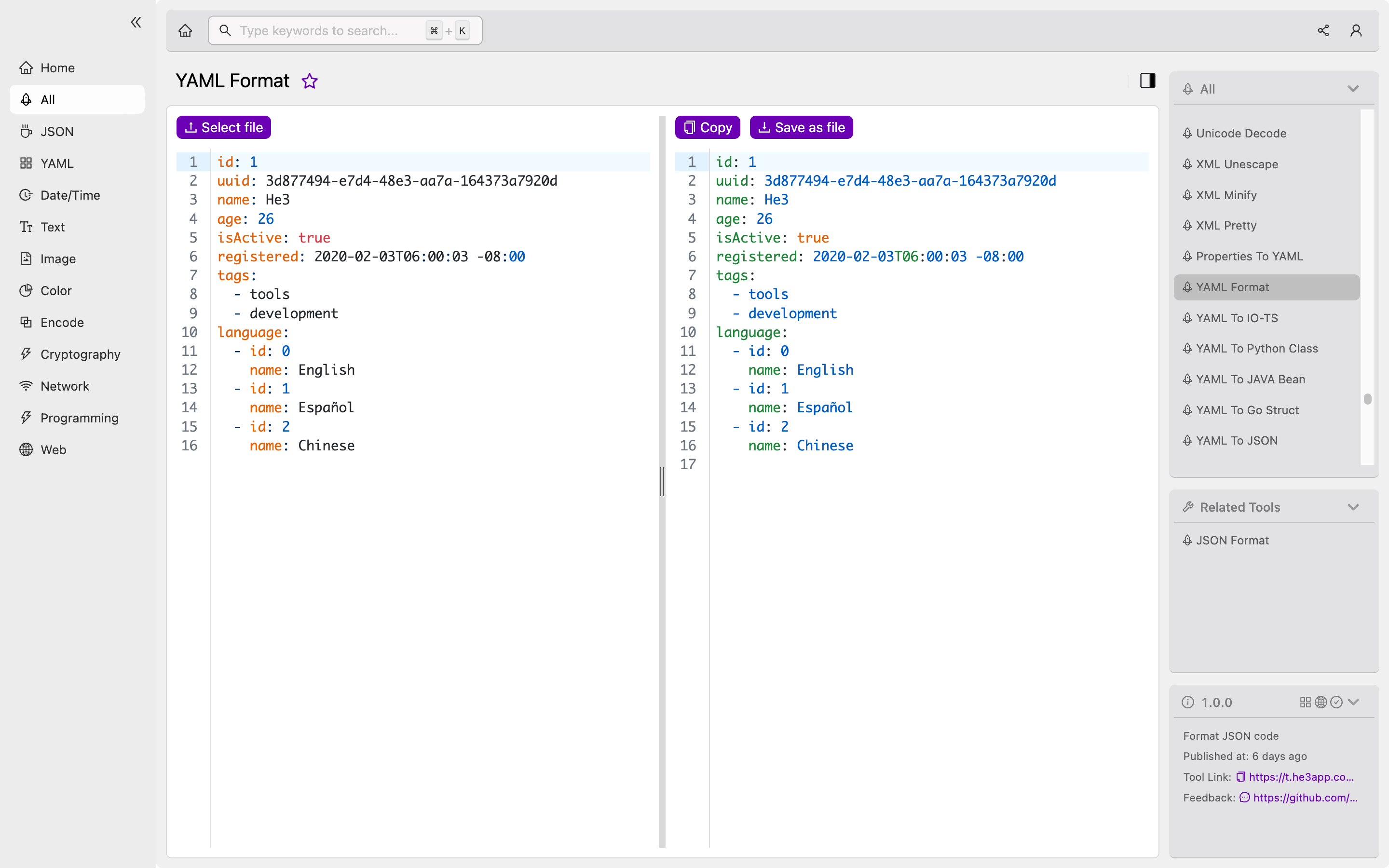Understanding YAML Format: A Guide for Developers
As a developer, it’s crucial to understand different data serialization formats used in various programming languages. One such format that has gained widespread popularity is YAML (short for “Yet Another Markup Language”). YAML is a human-readable data serialization format that enables developers to store and exchange data in a more concise and readable way. This guide will explain the concept of YAML Format, how it works, and its key features.
How Does YAML Format Work?
YAML Format uses indentation and whitespace to define data structures, making it more readable compared to other serialization formats such as JSON or XML. YAML uses three basic components to represent data: scalars, sequences, and mappings.
Scalars are single values, such as strings, numbers, or booleans. Sequences are ordered lists of scalars, while mappings are collections of key-value pairs. YAML Format uses colons and hyphens to define mappings and sequences, respectively.
Here’s a simple example of YAML data:
person:
name: John Doe
age: 32
hobbies:
- hiking
- readingIn this example, we have a mapping with three keys: person, name, and age. The person key is mapped to another mapping with two keys: name and age. The hobbies key is mapped to a sequence of two items: hiking and reading.
Scenarios for Usage
YAML Format is commonly used for configuration files, data exchange between applications, and as a human-readable alternative to other serialization formats. Here are some scenarios where you might consider using YAML:
-
Configuring application settings: YAML is a popular choice for configuring application settings, as it allows developers to easily modify settings without having to edit complex XML files.
-
Storing and sharing data: YAML Format is a great way to store and share data in a more readable way. For example, you can use YAML to store database records or API responses.
-
Testing: YAML is often used in testing frameworks as it allows developers to write test cases in a more concise and readable way.
-
Scripting: YAML can be used as a scripting language, allowing developers to write simple scripts in a familiar data structure format.
Key Features of YAML Format
| Feature | Description |
|---|---|
| Human-readable | YAML files are written in plain text, making them easy to read and modify. |
| Concise | YAML Format uses indentation and whitespace to define data structures, making it more concise compared to other serialization formats such as XML. |
| Easy to learn | YAML is easy to learn, with few rules and a simple syntax. |
| Supports Comments | YAML Format allows developers to add comments, making it easier to understand the data structure or configuration file. |
| Supports common datatypes | YAML supports common data types like numbers, strings, arrays, and objects. |
Misconceptions and FAQs
Misconception: YAML and JSON are interchangeable
While YAML and JSON share similarities, they are not interchangeable. JSON is a stricter subset of YAML and has a more rigid syntax. YAML, on the other hand, has a richer set of features and is more human-readable.
FAQ: What is the difference between YAML and XML?
YAML and XML are both used for data serialization, but they have different syntaxes. XML uses tags to define data structures, while YAML uses indentation and whitespace. YAML files are generally more concise and easier to read than XML files.
FAQ: Can YAML be used with any programming language?
Yes, YAML can be used with any programming language that has a YAML library or parser. Most popular programming languages, including Python, Java, C#, Ruby, and Node.js, have YAML libraries available.
How to Use YAML Format
To use YAML Format, you can create a YAML file using a text editor or any IDE that supports YAML. You can also use a YAML Format tool like the one provided in He3 Toolbox (https://t.he3app.com?s0m6) to create and validate YAML files.

Conclusion
YAML Format is a human-readable data serialization format that is easy to learn and use. YAML enables developers to store and exchange data in a more concise, readable, and maintainable way. By understanding the key features and scenarios for usage, developers can effectively leverage YAML Format to solve common problems in their programming workflow. If you haven’t already, give YAML Format a try and see if it can help you streamline your data serialization needs.
References
